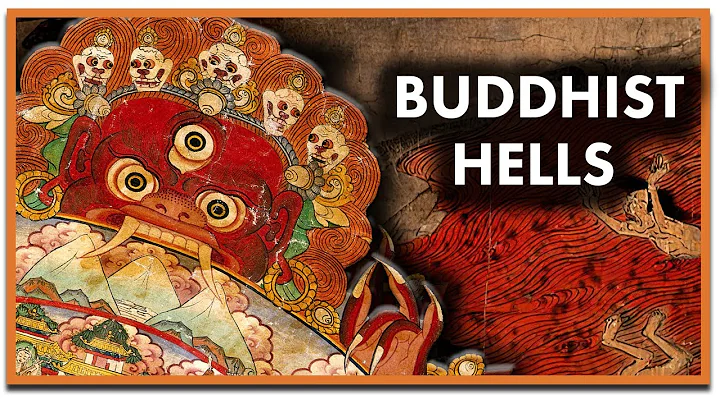
The idea of "dependent origin" in Buddhism is the basic philosophical concept put forward by Sakyamuni when he founded Buddhism. This idea was formed in opposition to the dominant philosophical theory of Brahmanism in ancient India. In the later development of Buddhism, the idea of dependent origination was continuously enriched and enriched. Later, doctrinal differences appeared in Buddhism, resulting in different branches or schools, and many new concepts were proposed. However, the various schools of Buddhism generally recognized the idea of dependent origination. It is worth noting that in this recognition, there are actually some different interpretations and understandings. These elements are important contents of theoretical changes in the later development of Buddhism, especially the opposition between the concepts of "being and non-being" that emerged in the history of Buddhist thought, which is directly related to each school's understanding of the idea of "dependent origination".
1. The formation of the thought of Dependent Origination
Buddhism first proposed the thought of Dependent Origination, which was related to its opposition to the Brahmanical thought of ancient India . Brahmanism emerged in ancient India much earlier than Buddhism, and was the generally dominant ideology in the ideological circles at that time. This idea believes that in society, the Brahmin caste has the highest status, and other social classes (Kshatriyas, Vaisyas, Sudras) should live below the Brahmin caste. Economically, politically, and legally, the Brahmin caste must be given priority and the superior status of the Brahmin caste be accepted. The superior status of the Brahmin caste exists innately and will exist forever.
Corresponding to the political proposition of Brahmanism, Brahmanical thinkers put forward a concept of "Brahman", believing that Brahman is the highest entity in the universe, it truly exists, and all things are based on Brahman. Brahman is the main body in the phenomenon of human life. This subject is also sometimes called " Atman " or "Brahman". Everything is dominated by Brahman (the Self). Brahman is an eternally existing entity. It does not produce itself, but it can produce other things, or other things themselves. Brahman will not be destroyed and is the root of all things. Brahman is one without parts. The various forms of things in the world are unreal and are the incorrect concepts or illusory consciousness of ignorant people about the single Supreme Brahman.
This kind of Brahman monism thought of Brahminical thinkers corresponds to the "Brahmin supremacy" proposition put forward by the Brahmin priests class, because only by philosophically recognizing the existence of an eternal highest entity in the universe can Brahman supremacy and Brahmin's The assertion of the immutability of the supreme position is reasonable. The caste system in India existed during the Vedic period, and the idea that Brahman dominates everything and is eternal has also been circulating in India for a long time. Before the emergence of Buddhism, it was the dominant idea in this area of ancient India.
When Buddhism emerged, it mainly represented the ideological tendencies of the non-Brahmin caste classes in society at that time. These classes are mainly people belonging to Vaishyas and Kshatriyas. They were dissatisfied and resistant to the political opinions and corresponding philosophical ideas of the Brahmin priest class. Therefore, when Buddhism was born, it put forward the idea of "the equality of the four surnames". For example, it is said in the fifth volume of " Translation of the Zagama Sutra ": "You should not ask where you were born, but what you did. A small tree can make fire, and a humble person can make a virtuous person." This means that from the perspective of Buddhism, a person A person's birth (caste) is not important, what is important is his behavior or character. People of humble birth can also become virtuous people in society. This kind of proposition has some ideological tendencies towards social equality.
Corresponding to Buddhism's political proposition of equality, an important theory put forward by early Buddhism in its teachings is the idea of "dependent origination". Buddhism does not agree with Brahmanism's theory that things are fundamentally Brahman. It opposes the concept that there is a single real, eternal and unchangeable supreme entity among all things in the world. It opposes the idea that the fundamental cause of things is a single entity. Instead, it believes that things are caused by the combination of causes and conditions. There are many kinds of components that make up things, and specific things are produced by the interaction of different causes and conditions (conditions). There are many relevant discussions in early Buddhist scriptures. For example, Volume 12 of the "Za Agama Sutra" says: "This exists, therefore that exists, this arises, therefore that arises." Volume 11 of the "Zhong Agama Sutra" says: "Because of this, that is born. If there is no such cause, that will not be born. Therefore, there is that. If this is destroyed, that will be destroyed.""This theory of cause and effect actually affirms the generation of things, and does not say that conditions are unreal. It also emphasizes that things can only be produced by the combination of at least two or more components, rather than the mainstream thought of Brahmanism. In this way, things only have one real ontology, Brahman. The specific forms of things are the product of people's misunderstanding of the single Brahman. The worldly things that are the result are unreal. Buddhism emphasizes that there are multiple conditions to produce things. This kind of dependent origin The thought is pluralistic.
2. The main manifestation of the thought of dependent origination in early Buddhism
The thought of dependent origination is reflected in many theories of early Buddhism, such as the theory of twelve causes and conditions, the thought of the five aggregates and the theory of the six realms.
The theory of twelve causes and conditions most prominently demonstrates the Buddhist thought of dependent origination. According to the discussion in the twelfth and other Buddhist scriptures of the "Za Agama Sutra", the "twelve causes and conditions": ignorance (ignorance of the nature of people and things) ), actions (referring to physical, verbal and mental actions), consciousness (the body of human cognition), name and form (components that constitute human matter and consciousness), six sense organs (eyes, ears, nose, tongue, body, (meaning the six body organs), touch (touch), feeling (feeling), love (desire for things), grasping (grasping), existence (the existence of the three realms), life (the production of life in all living beings), aging and death (life) Death after the end). These twelve life links are a series of changes in cause and effect. The previous link is the cause or condition of the next link, and the latter link is the effect of the previous link, which is also the cause of the next link. Cause. All these links are not eternal single entities, but a kind of cause and effect in the life chain. The specific life form is also a form of cause and effect relationship. It is non-eternal, and the life form produced by it is nothing more than a cause and effect. The reincarnation of the new twelve causes and conditions. The demise of the old form of reincarnation is the disintegration of a series of causes and conditions. New life forms arise due to the generation of new ignorance. As long as people do not eliminate ignorance, these twelve causes and conditions will arise again. These twelve causes and conditions do not exist forever. When people understand the nature of things, ignorance will be eliminated. Without ignorance, the life form of the twelve causes and conditions will cease, and this will achieve the nirvana pursued by Buddhism. Or a state of liberation. Buddhism teaches people to understand the twelve causes and conditions, not to ask people to pursue the twelve causes and conditions, but to guide people to understand the essence of the twelve causes and conditions, with the purpose of getting rid of the twelve causes and conditions. The twelve causes and conditions are the form of reincarnation, and what Buddhism believes in Think of the constantly changing worldly form of people. This worldly state is full of pain in the eyes of Buddhism. Jumping out of this state can get rid of pain. This is the highest goal pursued by Buddhism.
The five aggregates (also translated as the five yin) are also An analysis of human form and function guided by the concept of dependent origination. Brahmanical philosophy believes that the so-called human being is essentially a form of the only real "Atman", and the real reality is a single subject. Buddhism in When it came into being, it opposed this view and believed that human beings are also formed by the aggregation of various conditions. These conditions that aggregate human beings mainly have five components, namely form aggregate (referring to all things with form and quality, which is close to what people today call material phenomena, such as earth, water, fire, wind and things composed of them), feeling aggregates (referring to feelings, that is, feelings or emotions arising from sensory contact with external objects, etc.), perception aggregates (referring to representations, concepts, etc. ), action aggregates (referring to mental functions such as will), and consciousness aggregates (referring to overall conscious activities, such as distinguishing and recognizing things, etc.), collectively called the five aggregates. These five aggregates are the five aggregates or five conditions that constitute the human body and its functions. They are ever-changing, impermanent, and therefore suffering. This is also the early Buddhist view of people. The proposal of this theory mainly denies the Brahman monism thought in Brahmanical philosophy.
The six realms are also an analysis of human components proposed by Buddhism based on the idea of dependent origination. The so-called "six realms" refer to earth, water, fire, wind, space, and consciousness. For example, it is said in Volume 42 of the "Zhong Agama Sutra": "Human beings have six realms. Why is this said? They are the earth realm, the water realm, the fire realm, the wind realm, the space realm, and the consciousness realm." What is said here is " "Six Realms" refers to the six elements. The so-called "people have six elements" means that people are composed of these six elements.This theory is also opposed to Brahmanism's Brahman monism. It affirms that human beings are composed of multiple causes and conditions. Among these six elements, earth, water, fire, and wind are material elements. Space often refers to space in Indian philosophy , and sometimes refers to a medium that transmits sound. Here it refers to a substance that transmits sound. Think of it as the same category as the first four elements. Consciousness refers to awareness. The Six Definitions Theory actually believes that human beings are composed of material elements and spiritual or conscious elements.
Whether it is the theory of twelve causes and conditions, or the theory of five aggregates and the theory of six realms, they all believe that things in the world are not produced by a single entity, or that existing things are not essentially a single structure. This theory of Buddhism is obviously pluralism. There were obvious differences in the comments on the nature of such multiple forms of things in later Buddhism.
3. The idea of dependent origination and the concept of reality in sects of Buddhism
In the later development of Buddhism, sects split. First, about twenty sects of Buddhism were formed, and later Mahayana Buddhism, mainly composed of the Madhyamaka and Yogacara sects, emerged. The idea of dependent origination is affirmed by believers in both Buddhist sects and Mahayana Buddhism, but there are different views on the nature of dependent origination.
In the sects of Buddhism, it is said that Sarvastivada is a school that believes that dependent origination of things is real. The basic idea of this school is that since things are dependently arising, then the body of things (conditions) is not empty, but actually exists, so it puts forward the idea of "the eternal existence of the legal body". For example, in the 76th volume of "The Great Vipassana Treatise" , when describing the thoughts of Arisu Buddhism, it is said: "The conditioned dharma that has no effect is called the future, the one that has the effect is called the present, and the effect that has ceased is called the past. Repeatedly , the color has not changed and hinders the name of the future, there is a change that hinders the name of the present, and the change and obstruction has been destroyed and is named in the past. The future that has not been accepted is recognized, the present is recognized, and the past has been recognized and destroyed. Thinking about the future that has not taken the form, Rightly able to take the name of the present, take the name of the past that has ceased. The future has not been created, the present has been created, and the past has been created. The future that has not been recognized is known as the present, and the past is known as the past. Again, the eye has not seen the future of the name of form, but can see the present of the name of form, and has seen that the name of form has ceased to exist in the past. Extensively speaking and even comprehending the future of the name of Dharma, the present of the name of Dharma can be seen, and the name of Dharma has passed away. The cause-and-effect nature of all dharmas in the three times is established according to their corresponding order. The substance is always there, without increase or decrease, but it can be said to be or not according to its function." In the sect, the method of dependent origination belongs to " conditioned method" , that is, all things with the characteristics of birth, existence, change and death. Things that existed in the past, things that exist now, and things that will exist in the future are all conditioned dharma. Youbu believes that although the "Youwei Dharma" or "Three Worlds Dharma" has various shape changes, different postures, and different manifestations, in essence, they are all "eternal in substance." The birth and death changes of the "conditioned dharma" or "Three Worlds Dharma" mentioned here are actually the birth and death changes of things that are dependently originated. In the Youbu, although things in the three lives are constantly changing due to causes and conditions, the changing things still exist. These causes and conditions do not disappear absolutely, nor do they arise from absolute nothingness. What most people in the world call birth and death are nothing more than changes in the form of causes and conditions, and the changing bodies of causes and conditions are real or eternal.
said that this kind of "Dharma existence" thought of Sarvastivada is a theory with great influence in Samarvastivada Buddhism. Some other sects of Buddhism believe that the Dharma is real, while others believe that the Dharma is unreal. For example, the Duzi tribe believes that the Dharma of the three worlds is real, and also recognizes the disguised "I" (Potegara), while the Youbu does not recognize this kind of "I". The Issuing Department believes that the laws of the three worlds are all speech, while the Speaking Department believes that "worldly laws" are all pseudonyms, and only transcendental laws such as Nirvana are real. There are a lot of relevant discussions among the schools, and the opinions are not very unified, but generally speaking, the main thing that believes that the method of dependent origination has its own substance is the Sarvastivada. This theory of reality is the most representative theory in Buddhism.
4. The idea of dependent origination and the concept of emptiness in Mahayana Buddhism
Mahayana Buddhism’s view on the nature of dependent origination is completely different from that of Sarvastivada, which represents a major trend in the later development of Buddhism.The two major schools of Mahayana Buddhism generally advocate that the law of dependent origination is empty in nature, but there are certain differences in the form of argument.
The Madhyamika sect is an earlier sect in Mahayana Buddhism. This school inherited and developed the main ideas of the Prajna Mahayana Sutra and believed that things are empty in nature. The Madhyamika school used the dependent origin of things as the main basis when demonstrating emptiness. The representative treatise of this school, Nagarjuna , says in the fourth volume of the "Middle Way": "There is no dharma that does not arise from causes and conditions, so all dharmas are empty." According to the discussion here, all things They are all dependently originated, so all things are empty in nature. The Madhyamika school denies the existence of things, but it does not believe that things are absolute nothingness. Instead, it emphasizes the emptiness of things in the state of dependent origination. Therefore, the denial of this school mainly means that things are not a single unchanging entity, but are constantly changing. The fate of all dharma. Dependent Origination is Emptiness Talking about reality does not deny that things have reality. For example, Qingmu, a figure in the Madhyamaka School, said in the commentary to the third volume of "Middle Way": "The reality of all dharmas is Nirvana." The reality here is It refers to the original state of things that is constantly changing. Understanding this also understands the nirvana pursued by the Madhyamika sect. The Madhyamika school starts from acknowledging the theory of dependent origination, and finally determines the nature of all dharmas as emptiness. This is different from Sarvastivada, which is also based on acknowledging the theory of dependent origination, but the conclusion is that dependent origination is equivalent to saying that things are arising and things are real.
Yogacara is a school in Mahayana Buddhism that advocates the theory of consciousness only. This school believes that everything in the world is the product of people's consciousness, and therefore is essentially the realization of consciousness. Since it is a manifestation of consciousness, it is not real. Vasubandhu said in Chapter 17 of " Thirty Treatises on Consciousness Only" : "This is the transformation of all consciousnesses, and they are different from each other. There is nothing here and there, so everything is only consciousness ." This means that everything is consciousness. It is the product of the transformation of consciousness, whether it is the consciousness of distinction or the things that are distinguished, it is the transformation of consciousness. Therefore those external objects (differentiated things) are empty, so all that exists is consciousness. Volume 1 of " Consciousness-Only Theory " says: "There is no external environment, only internal knowledge, which seems to be generated by external environment." It is clearly believed that external environment is unreal, and only internal knowledge seems to produce external environment. . Discussions like this appear in large numbers in the writings of the Yogacara school. Simply from these discussions, it seems that this school recognizes a real "consciousness", and what is empty is an unreal external environment transformed by consciousness. But the Yogacara School actually does not absolutely recognize the entity of a non-empty "consciousness". Volume 2 of "The Theory of Consciousness-Only" says: "In order to avoid delusion and attachment to the external reality of the mind, we say that there is only consciousness. If you insist on the real existence of consciousness-only, it is also a Dharma attachment, just like grasping the external environment." This paragraph. These words are very crucial and play a great role in correctly understanding the nature of the concept of "consciousness" or "mind" in the Yogacara school. Its main meaning is that in order to get rid of the misconception that things other than mind and mind are real, Yogacara says that only the consciousness that realizes them is real. But if we really believe that only consciousness is real, then it is just like the persistence of external reality, it is also a kind of attachment to things. The implicit meaning of this passage is that saying that all consciousness is only consciousness is actually a "convenient explanation". Consciousness or mind, like other things, cannot be attached to and is empty.
The Yogacara School talks about the realization of all consciousness, but it does not deny the idea of dependent origination that was proposed in the early Buddhist period, but also uses the idea of dependent origination as the basis for demonstrating emptiness. This is more obviously reflected in this school's theory of "three natures" and "three non-natures". The "three natures" refer to the self-nature that is grasped by the universal mind, the nature that arises in accordance with others, and the complete nature. "Three no-natures" refers to the no-nature of appearance, no-nature of birth, and no-nature of ultimate meaning.
"Thinking about the nature of what is grasped" is the inability to realize that there is no realm of knowledge, "thinking about" from all aspects, falsely imagining various phenomena in the external world, and being obsessed with the differences in things, thinking that they really exist . In fact, all things, such as the so-called self and dharma, have no self-nature or reality.Volume 8 of "Chengweishilun" says: "Thinking all over, so it is called all over, and there are many categories. It is said to be that and that. It means that it can be counted all over and falsely differentiated, that is, all kinds of calculations are based on false distinctions. Objects are called the self-nature of the self-nature of the self-nature of the self-nature of the self-nature of the self-nature of the dharmas, and the total name of the self-nature difference of the self-conception is the total self-nature of all the self-natures. Such self-nature has nothing, and it is impossible to obtain it by reasoning."
"Depending on other origins" means that things arise from conditions, which is a characteristic of things. All things are like illusions, which is a false distinction made by people. Since things originate from conditions, they are "not-existence-like-existence". Volume 8 of "The Treatise on Consciousness-Only" says: "The entity on which it depends is actually dependent on conditions. This nature is not non-existent. The name depends on others. It is a false distinction because conditions arise." , such as illusions, etc., non-existent and seemingly existing, deceiving fools, everything is named according to other origins."
"Complete reality" refers to reaching the highest state of "truth", that is, recognizing various external situations The distinctions are not true, and we see the "emptiness of nature" of "taking into account the nature of everything" and "nature arising from others". The true nature of consciousness shown by this emptiness is a real state of perfect achievement. Volume 8 of "The Theory of Consciousness-Only" says: "The foolish man is here to hold on to my dharma, whether it is different or not, it is like an empty flower, etc., with no nature, and everything is called universal calculation. According to him The false grasping of my Dharma is empty, and the true nature of what is manifested by this emptiness is complete and complete."
" phase has no nature " mainly refers to the nature of the results of the grasping, focusing on the "phase" of the grasping false. Since people's understanding of "thinking all over" is false, the "appearance" attached to this understanding is actually nothing, just like the flowers in the sky of nothingness. Therefore, it is said that "appearance has no nature". Volume 9 of "The Theory of Consciousness-Only" says: "According to the initial calculation, the established appearance has no nature. Therefore, the body and appearance do not exist after all, just like empty flowers."
"Birth without nature" is the same as the previous "depending on others" "Sex" is said correspondingly. Things arise from "conditions", and things that arise due to "conditions" cannot have real origin and self-existence. Therefore, it is said that "birth has no nature", which is also a nature of things. Volume 9 of "The Theory of Consciousness-Only" says: "Non-nature is created according to others in turn. This is like an illusion, relying on all kinds of conditions to arise. It is not like clinging to nature in vain. Therefore, assuming no nature, there is no non-nature at all."
"Win" "Meaning has no nature" corresponds to the reality of perfection. Because we are far away from the attachment of all-encompassing thoughts and can see "appearance without nature", because we realize that things that arise from others are "born without nature", we have reached the consciousness of "without self-nature". This kind of "no self-nature" does not mean that there is no nature, but "the ultimate meaning is without nature". "Supreme meaning without nature" is the state of the supreme and complete achievement of "no self-nature" or "emptiness" as the highest truth of things shown by "perfect reality". Volume 9 of "The Theory of Consciousness-only" says: "Based on the later perfection, the ultimate meaning has no nature. It is said that the ultimate meaning is far away from the nature of my dharma that was grasped by the previous calculations. Therefore, it is assumed that there is no nature and no non-nature at all, just like Tai Although space is permeated with all forms, it is manifested by the non-nature of all forms. Although it is not the ultimate meaning of its origin, it can be said to be the ultimate non-nature."
The theory of the three natures and the three non-natures is mainly a consciousness-only view of emptiness. Things that emphasize false distinctions in human understanding are empty in nature. But the thought of dependent origination involved is also an important basis for its demonstrative emptiness theory. Things originate from others, so there is no real origin and no real nature. Only by recognizing this truth can we reach the highest and perfect ideological realm of consciousness-only emptiness.
Generally speaking, the two major sects of Mahayana Buddhism have used the idea of dependent origination to demonstrate the theory of the "empty nature" of things. Generally speaking, this idea of emptiness does not believe that things are absolute nothingness, but that things that arise from dependent origin are not static in nature, and there is no absolute unity like "Brahman" in the monism of Brahmanical philosophy. entity. This kind of thinking is the mainstream in the development of Buddhism.
Various schools of Buddhism generally object that things are absolute nothingness. The sect that advocates absolute nothingness also existed in the Buddhist school. This is the so-called Fang Guang Buddhism. Fang Guangbu emphasized that things are absolutely empty, and this kind of emptiness is not based on the idea of dependent origination. "Three Essays on Profound Meaning" describes the theory of this school: "Taoist Fang Guang said that all dharmas are like tortoise hair and hare horns, free from sin and retribution. This person has lost the truth of the world, but everything seems to be empty."The so-called "like a tortoise's feathers and a hare's horns" are actually things that do not exist in the world at all. They are things that will never exist in the past, present or future. This absolute concept of nothingness or emptiness has nothing to do with the basic theory of Dependent Origination in Buddhism. This concept is called "emptiness in the evil realm" in Buddhism. It is a complete view of nothingness. In fact, it completely deviates from the fundamental principles of Buddhism. It does not recognize the idea of dependent origination and has been rejected by most Buddhists in history. Abandoned by the sect, it gradually disappeared in India.
5. Comprehensive review
In summary, we can see that the idea of dependent origination is a basic theory that has played an important role in the development of this religion since the founding of Buddhism. Although Buddhism In the subsequent evolution, many schools within the religion were formed and many new theories were proposed, but the idea of dependent origination is adhered to by most schools within the religion. The formation and development of the concept of "existence" or "empty existence" in Buddhism also It is closely related to the idea of dependent origination. The focus of this kind of theoretical discussion is the essence of life phenomena and natural things. The question of whether life phenomena and natural things are real or empty is the core concern of Buddhist thinkers. Related content display It shows the basic propositions and theoretical characteristics of Buddhist philosophy.
When Buddhism was born, it mainly reflected the ideological tendencies of the non-Brahmin caste classes in ancient India and put forward the political proposition of the equality of the four surnames. Therefore, in terms of doctrine, Buddhism proposed the main idea of dependent origin and opposed the belief that the world There is only one real concept of ontology for things. This idea of dependent origin is a kind of pluralism in philosophy, which is opposite to the Brahmanic monism thought that is generally dominant in ancient Indian society. In the historical process of ancient India, this idea For a long time, the philosophical form of the country has been the opposition between the monism of Brahmanism and the pluralism of Buddhism. The main theory proposed by Buddhism in this regard is the thought of dependent origination. The thought of dependent origination has directly affected other theoretical forms of Buddhism.
is in judgment Regarding the reality of things in the world, Buddhism is based on the idea of dependent origination. Some schools within the teaching believe that things are changes in the form of conditions. The conditions for such changes always exist, so the body of the law is eternal; some schools It is believed that things in the world are changes of various conditions, and there is no eternal single condition, so things are empty in nature. From the perspective of dependent origin, these views have their own reasons, but they arise in society The effect is not exactly the same.
For some people with low cultural level, they often cannot correctly understand the true meaning of the so-called concept of emptiness or nothingness in Buddhist theory. They do not understand that it mainly refers to the origin and continuous change of things, but think that it is Refers to nothing and absolute nothingness. Therefore, when encountering difficulties or major setbacks, such people often think that this is the emptiness of Buddhism and is an illusion. Therefore, they lose confidence in the future of life and give up efforts to overcome difficulties. This kind of emptiness in Buddhism The misunderstanding of concepts has a negative social effect.
For some people with relatively high cultural levels and good Buddhist attainments, they can often understand the main or true meaning of the Buddhist concept of emptiness or nothingness based on the idea of dependent origination, and understand it clearly The so-called emptiness mainly refers to the constant changes in the relationship between things. When these people encounter difficulties or major setbacks, they can often realize that the unfavorable situation will not last forever, strengthen their confidence in overcoming difficulties, and work hard to change the unfavorable situation. This positive understanding of the Buddhist concept of emptiness has a positive social effect.
The concept of reality in Buddhism mainly refers to the theory of Sarvastivada. This concept is also based on the theory of dependent origination, which emphasizes that there is always the existence of the so-called "dharma body" in the ever-changing conditions. The concept of reality of Arita Buddhism does not believe that there is anything immutable, which is different from the reality theory of Brahmanism that was generally dominant in ancient India. Aribu acknowledges that this reality is constantly changing. From a scientific perspective, this theory has a lot of rationality. However, in the entire history of the development of Buddhism, the theory of Aristocratic Buddhism does not occupy a dominant position. After the rise of Mahayana Buddhism, the influence of so-called Hinayana Buddhism became significantly smaller. Whether in India or China, the later development mainstream of Buddhism was Mahayana Buddhism.
The development of Mahayana Buddhism is more suitable for the development of Buddhist cultural characteristics, especially the concept of emptiness of Madhyamaka and other schools, which not only actually affirms the real factors in dependent origination, but does not deny the significance of active activities in the world, and can also form a formal It better demonstrates the transcendent and holy nature of Buddhism. This is very beneficial for attracting people. Such advantages are not possessed by the so-called Hinayana Buddhism such as Aristocratic Buddhism, which advocates the theory of reality.
was originally published in "Social Sciences in Chinese Universities" Issue 5, 2020.
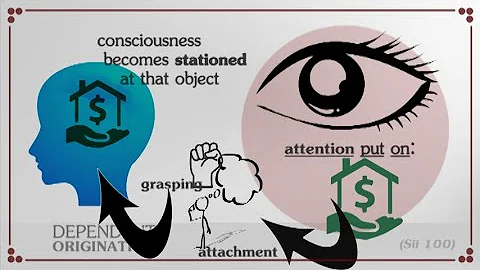




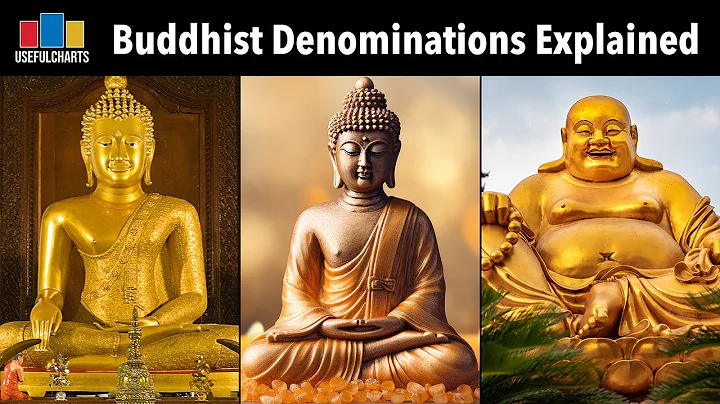


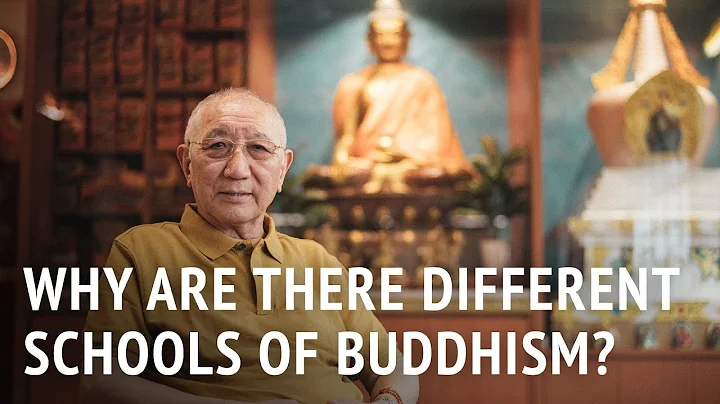
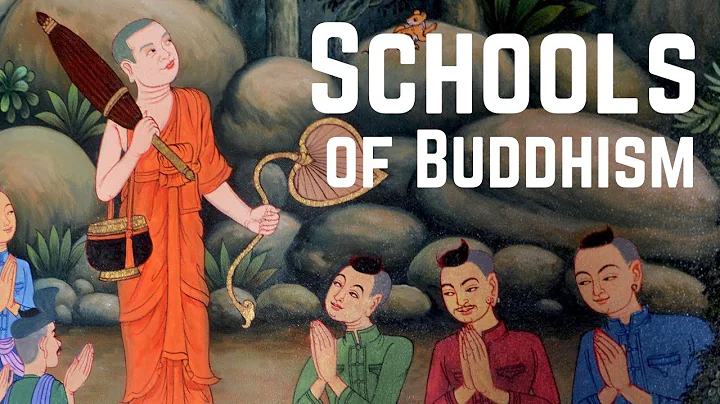
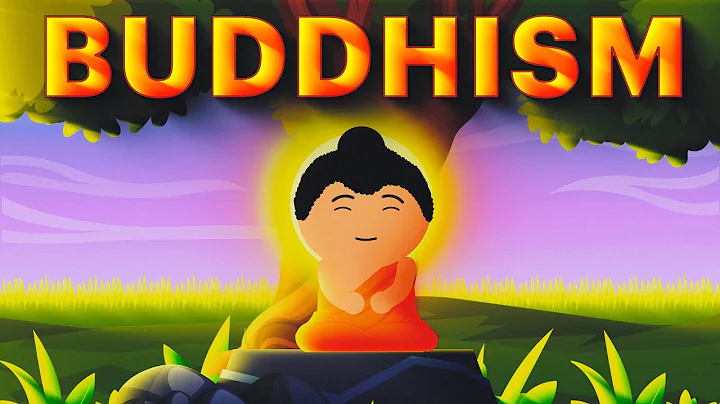






![[English] Who Am I - Lecture 1 - Ven. Guan Cheng - DayDayNews](https://i.ytimg.com/vi/KU0fUs2It5o/hq720.jpg?sqp=-oaymwEcCNAFEJQDSFXyq4qpAw4IARUAAIhCGAFwAcABBg==&rs=AOn4CLDFpQUN_QwRfC7bmP4sUadq-RcYdg)
![A Moving Masterpiece 清明上河图 [English narration] - DayDayNews](https://i.ytimg.com/vi/kxff-4GktOI/hqdefault.jpg?sqp=-oaymwEcCOADEI4CSFXyq4qpAw4IARUAAIhCGAFwAcABBg==&rs=AOn4CLBtHGLeUpJNCYDJYnZTuISQ1N5Vag)

